Well, when I signed off at end of my last What I Learned post, I certainly did not imagine that my next seasonal WIL reflections could alternatively be titled, “What I Learned from Living Through a Global Pandemic and Financial Crisis.” But here we are. In the past few months we’ve all learned more than we ever wanted to know about novel viruses, proper hygiene, the interplay between local and national governing bodies, our lack of appreciation for toilet paper, the art of a Zoom call, and how to work/entertain ourselves/teach our children from the confines of our homes . . . not to mention murder hornets, domesticated wildcats, and the weekly status of John Krasinki’s facial hair.
These are strange and—here comes the phrase we are all tired of hearing—unprecedented times, and uncharted territory makes for an excellent classroom. While I could easily write a novel (or seventeen) about what I’ve learned over the course of this seemingly endless spring, I’m limiting myself to twenty key takeaways.
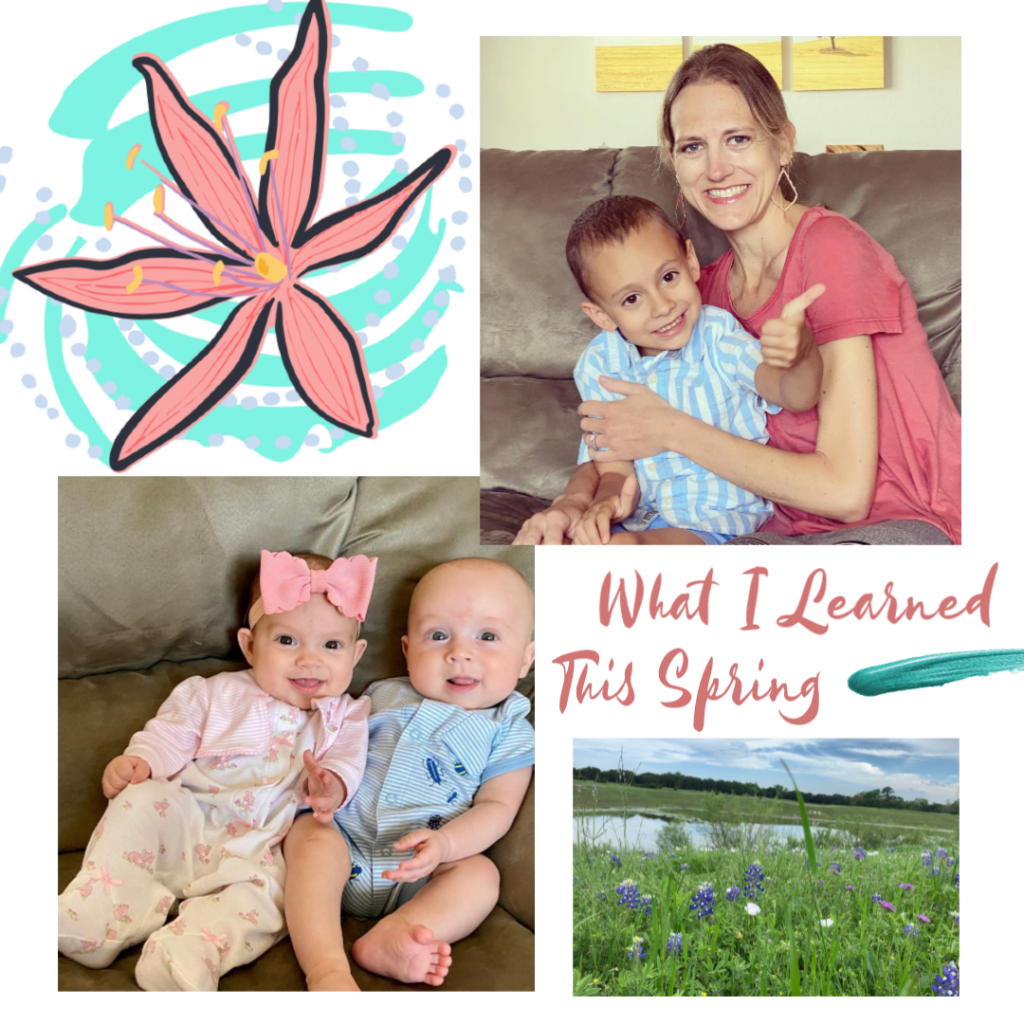
FROM OBSERVING THE WORLD AROUND ME, I LEARNED:
1. “Worst Case Scenarios” really do happen.
Chock it up to privilege or ignorance, but I’ve never been one to think about—let alone plan for—the worst. This season has taught me the short-sightedness of my perspective. On a positive note, I am now much more appreciative of my (Eagle Scout) husband’s stockpile of emergency rations, first aid paraphernalia, and hazard masks. (Unfortunately he did not foresee toilet paper shortages as a potential worst case.)
2. The world is more precarious than I’d assumed.
It’s remarkable how little it took to bring our economy, our social lives, our health care system, and our sense of security to a screeching halt. I am realizing how much unmerited trust I was putting in sources, structures, and systems that were ill-equipped to carry my expectations. That said, I’m also learning that. . . .
3. People are more resilient, creative, and resourceful than I had imagined.
The level of creativity we are seeing everywhere from YouTube to socially distanced weddings is astounding. People across the globe are accepting the hand we’ve been dealt and not only inventing new games, but truly mastering them! In many ways, my faith in the human race and our ability to move through hard times has been restored. However, I’m seeing that . . .
4. A crisis reveals our true colors.
These times have revealed so much goodness and beauty in humanity. They have also exposed some of us at our worst. (See: toilet paper hoarding, homeschool shaming, and vicious arguments over something as simple as a paper mask.) In trying to get my head around how both these things can be true, I’ve realized that this crisis is really just pulling back the layers of who we all are to uncover what’s inside: for some people, the true self behind the masks is lovely, and for others it really isn’t.
4b. Enneagram types are MUCH easier to spot when normal life has been upended.
My own Type One flag is flying higher than ever. It’s been interesting to see the type tendencies show up in new ways in those around me as well.
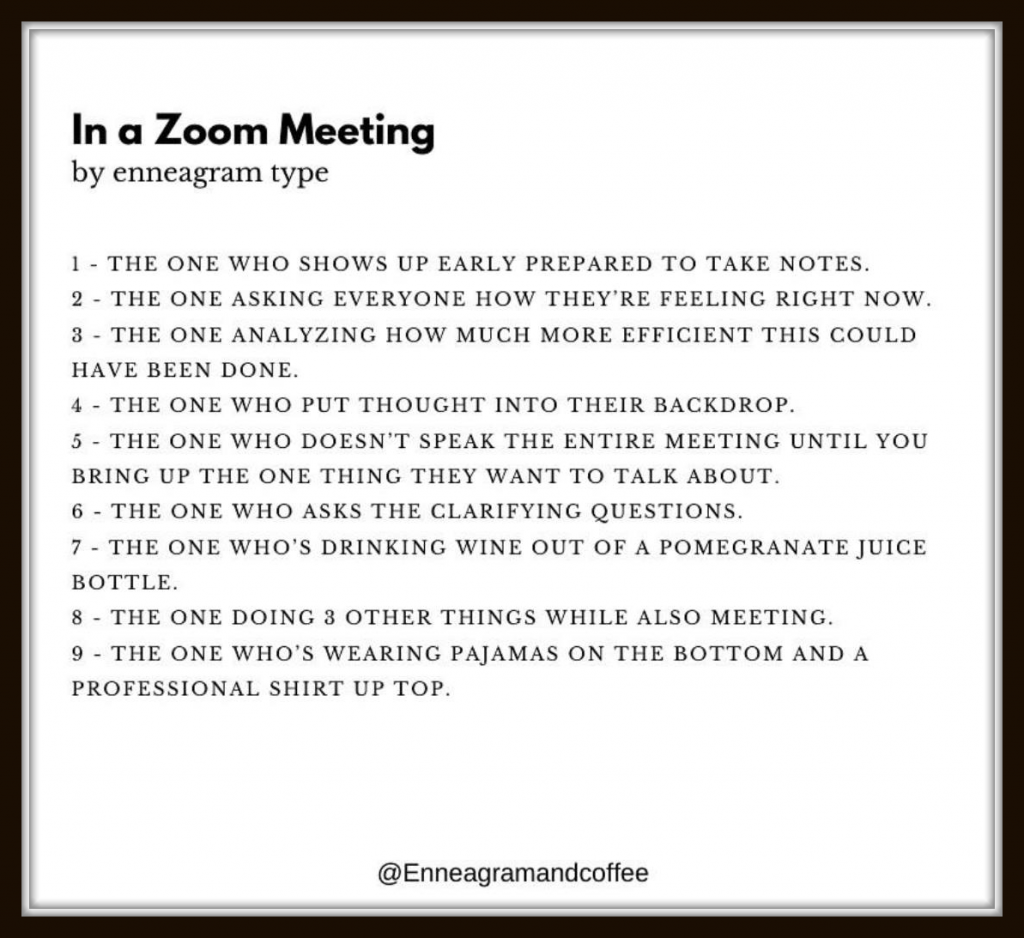
5. We adjust to new normals very quickly.
In a matter of weeks, the notion of staying home went from seeming totally absurd to entirely acceptable and even necessary. While this speaks to humanity’s resiliency and an admirable willingness to forgo personal freedoms for the common good, I’m somewhat frightened by how readily we accepted and adhered to mandates from people in authority. I’m not saying we were wrong to do so, but I now understand how people (both individuals and nations) can find themselves adjusting to previously unfathomable situations such as domestic abuse or fascist regimes.
SOME THINGS QUARANTINE HAS TAUGHT ME:
6. Wearing a mask is the worst.
I’m doing it (if not for my own safety, as a demonstration of my care for others), but I hate it. I feel like I’m suffocating, and I hate not being able to smile or easily talk with others. It definitely feels dehumanizing and I’m looking forward to going back to a world in which masks are not the norm.
7. I was not washing my hands long enough.
Twenty seconds is a long time, y’all! I’d estimate that in my pre-COVID life I was washing an average of ten or fifteen seconds, tops. I plead ignorance on this one. Now I know better, so I’m doing better, and I have the chapped skin to prove it.
8. Staying home all the time is actually pretty great.
As hard as this time has been for so many, our own family’s circumstances haven’t changed much. But our time at home has revealed how often we did go out (to the gym, church, play dates, errands, etc.) and how much easier it is not to. I certainly don’t plan to maintain this level of homebody-ness for the long term, but the lack of pressure to always be on the go—with three kids in tow—has come as an unexpected relief.
9. There are some amazing (free) resources available online for kids and adults.
A few favorites have been Scholastic’s Bookflix, Lunch Doodles with Mo Willems, Khan Academy Kids, and Workouts from Fitness Blender. We’ve also enjoyed a variety of virtual tours, church services, new YouTube videos and podcasts, and exercise classes and art lessons for kids. Most of these existed before a few months ago, and I had no idea!
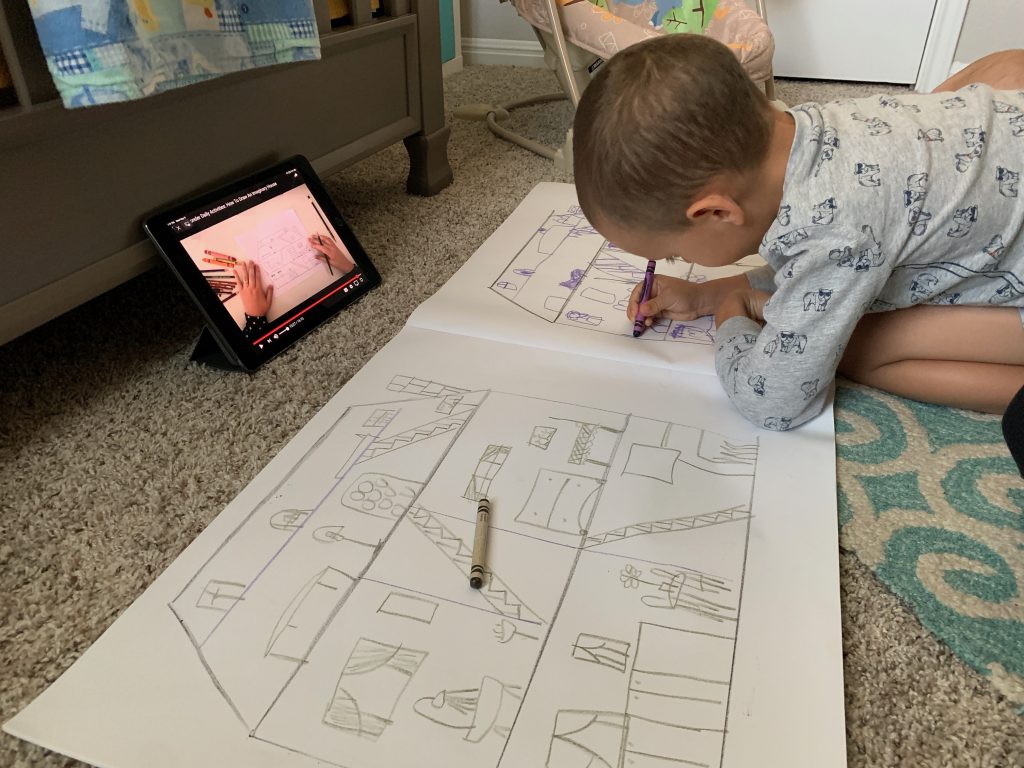
10. I enjoy doing video workouts at home, but only if I change things up.
I’ve done some of these in the past (most recently, I’ve been doing the MUTU workouts to heal my diastasis recti) but never enjoyed them enough to replace my go-to cardio workouts at the gym. Without that option, I’ve been experimenting with different online workouts. Charleston and I do one or two short workouts every morning while the twins nap, and it’s felt good to move my body in some new ways. I’m feeling stronger and more confident in my postpartum body, and I like the boost of energy I get from a twenty-minute toning session. However, I get bored easily (surprising given how much I value consistency and structure in every other area of my life!) so I do a different video every day. I love the toning and cardio workouts from Fitness Blender and have been mixing in some Pilates and even belly dancing workouts I’ve stumbled across, plus some fun superhero-themed ones that Charleston loves. The variety has been key in getting myself to make time for a workout five days per week.
11. I like following the news, and can do so in a healthy and productive way.
For the past several years I had avoided watching/reading/listening to the news because it left me feeling overwhelmed and helpless. When the Coronavirus first came on my radar in March, I started following a number of news sources and a few months in, I am realizing that consuming the news—in moderation—actually feels empowering right now. For me, the key has been to limit myself to podcasts featuring daily highlights, rather than following unvetted up-to-the-minute news feeds. I’ve also found value in following one left-leaning and one right-leaning source to get a bigger picture of the news that isn’t totally tainted by political ideologies.
AS A PARENT THIS MONTH, I LEARNED:
12. Sleep training is a game changer.
We never sleep-trained Charleston, and while I still stand by the attachment parenting approach we took with him, it simply wasn’t feasible with two babies. Choosing to sleep train Kali and Sully was a hard decision for me to make, but we are absolutely reaping the rewards. They are sleeping through the night (mostly) and following a nap schedule during the day; they are totally different—HAPPIER—babies now that they are getting some sleep, and the structure, breaks, and nighttime rest has been a lifesaver for this tired twin mama!
13. Introducing solids is pretty easy when you don’t overthink it.
This is yet another area where we took an entirely different approach with Charleston, and while baby led weaning worked out great with him, I have to admit that going the spoon-fed route with the twins has been a lot easier. With our pediatrician’s blessing, I haven’t been spacing out the introduction of new foods (something that I was obsessive about with Charleston) but have simply been having fun offering a variety of foods in different forms. It’s too soon to know how this approach will affect their long-term relationships with food, but our first two months with solids have been an overwhelmingly positive experience.
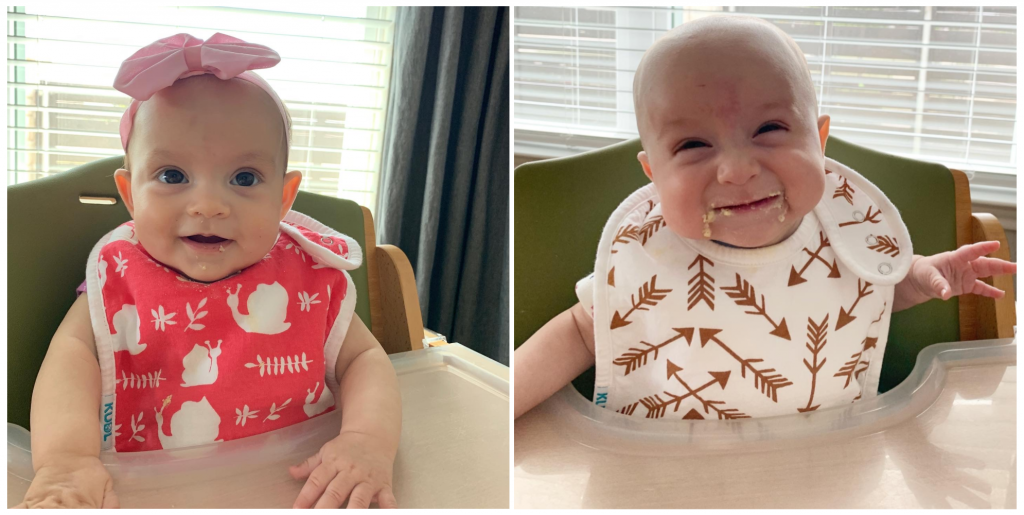
14. Homeschooling is SO much fun!
Luke and I have planned to homeschool our kids since before we became parents, and Charleston has never gone to any formal school setting, but I hadn’t been doing any official schoolwork with him until a few months ago. However, the combined effect of his turning five in January (a reminder to me that he starts Kindergarten soon!) and the increased amount of time at home lately has had us digging deep into our homeschool routines this spring. It has been so rewarding to put my Education degree to use by coming up with fun lessons and activities to do with him, and it’s been an absolute joy to watch him learn and grow. The camaraderie among parents around the world who are also homeschooling their kids—albeit mostly unexpectedly—has been pretty neat, and I’ve appreciated the abundance of free resources now available to us homeschoolers (see #9).
15. A little boredom is a really good thing.
As a full-time stay-at-home mom, I’ve always felt the need to keep Charleston entertained at all times. This has often involved daily outings, but without those options—and with much of my time occupied caring for the twins—Charleston has had to entertain himself a lot more these days. We don’t allow screen time on the week days (other than some supervised academic games and tutorials on the ipad), which sometimes leads to complaints of boredom, but I’ve been getting much better at not always “rescuing” him from his boredom. Charleston always manages to find a way to entertain himself, often in some impressively creative ways. (Like the day he dressed himself as a fireman and used paper to make a fire hose and flames—an idea he came up with on his own!).
A FEW THINGS I’M LEARNING FOR MYSELF:
16. I don’t have to have all the answers (or, often times, even an opinion). This situation is not black and white.
As I mentioned in this post, I’ve wasted a lot of time and energy attempting to establish my stance on everything from how we should feel about staying home (disgruntled? relieved? ambivalent?) to whether or not it was right to shut the economy down, and everything in between. . . and then silently policing those who didn’t align with me. It’s been freeing to accept that even the experts don’t have good answers right now, so I certainly don’t need to. I can be curious about the current climate without passing judgment or feeling the need to decide what’s best—especially because what’s best for one individual or community might not be the right approach for everyone else, since we truly are all weathering this storm in very different boats. I am learning to hold space for appreciation of my own positive experience while showing empathy for someone else’s hardships, and I’m recognizing that I can be joyful without having to ignore others’ sadness. Above all, I am remembering that there is grace to cover ALL of our missteps.

17. Assuming good intentions in others is the most helpful posture.
Our decisions have grown increasingly polarized lately, and while I might not agree with the choices other people are making, I can choose to assume that they are doing what they feel is best. I could be wrong: some individuals, political groups, or organizations may very well be acting in their own self interests and intentionally preying on the fears or well-being of others. But for my own mental health and my attitude towards the world, I would rather err on the side of thinking too highly of people than falsely assume malicious intent.
18. I have a lot of room for improvement in being “quick to listen, slow to speak, and slow to become angry.”
We are studying the book of James with our community group (via Zoom, of course) and I’ve been feeling deeply convicted by the message of James 1:19. My default setting is to avoid listening, speak too rashly, and run on an incredibly short fuse. God is doing a lot of work on me in this area, and while the refining process has been painful, I am thankful for this newfound awareness of my own shortcomings and hopeful about the good work that the Lord is doing in my heart.
19. Adaptability is crucial. It’s pointless to try to preserve normalcy when life is not “normal.”
This is something I began learning when the twins were born and that has been further ingrained in me during time at home. Rather than attempting to recreate my old life in twin-friendly or stay-at-home-friendly ways, it’s best to simply redefine normal and embrace entirely new ways of doing things.
20. Knowing how to pivot in a crisis is crucial, but so is “playing the long game” by keeping the bigger picture in mind.
When our world first fell to the Coronavirus, I think we all assumed life would be a little different for a few days or weeks at the most. We were willing to make drastic changes to survive this presumably brief amount of time. (Color coded homework schedules, anyone?) Now we know that our lives will continue to look different for the foreseeable future, and we need to move beyond bandaid fixes. For my family, that means we have some big decisions to make about our finances, job and schooling choices, and extracurricular activities. It also means learning to trust the Lord not just for today, but for tomorrow and the day and the year after that as well. The biggest picture of all is that He remains the source of my joy and my hope.
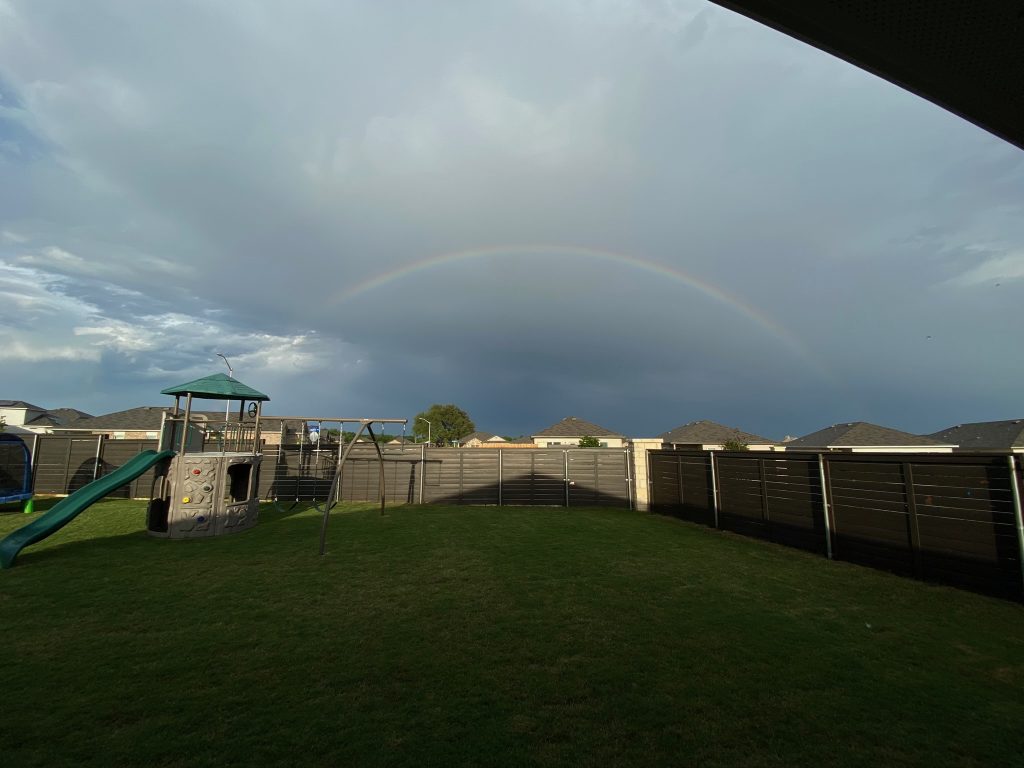
Spring isn’t quite over, but as we head into Memorial Day weekend and the unofficial start of summer, I think we are all eager to leave the spring of 2020 behind and move on to a new season. . . whatever it may look like. I’ve heard this time described as The Great Reflection, so as you reflect on these momentous (or momentously dull, depending on your current circumstances) past few months, what are a few lessons you are taking with you?
Fascinated, Kendra, by the Enneagram insights. One thing is sure, and it’s that crisis shows us our true selves–and we’re all on a steep learning curve.
Yes to this:
Adaptability is crucial.
We’ve all learned that one!